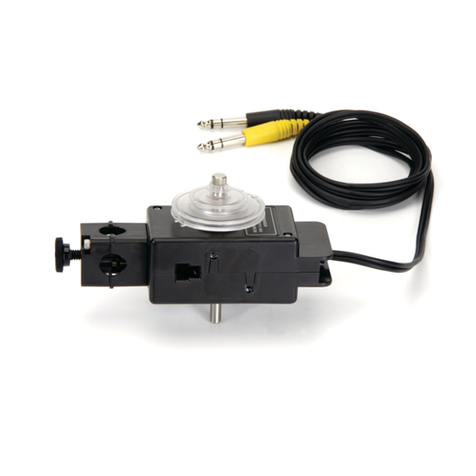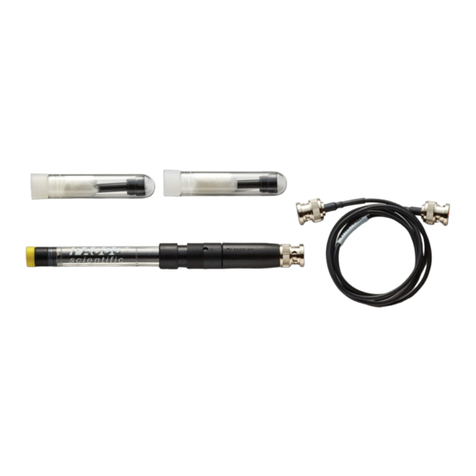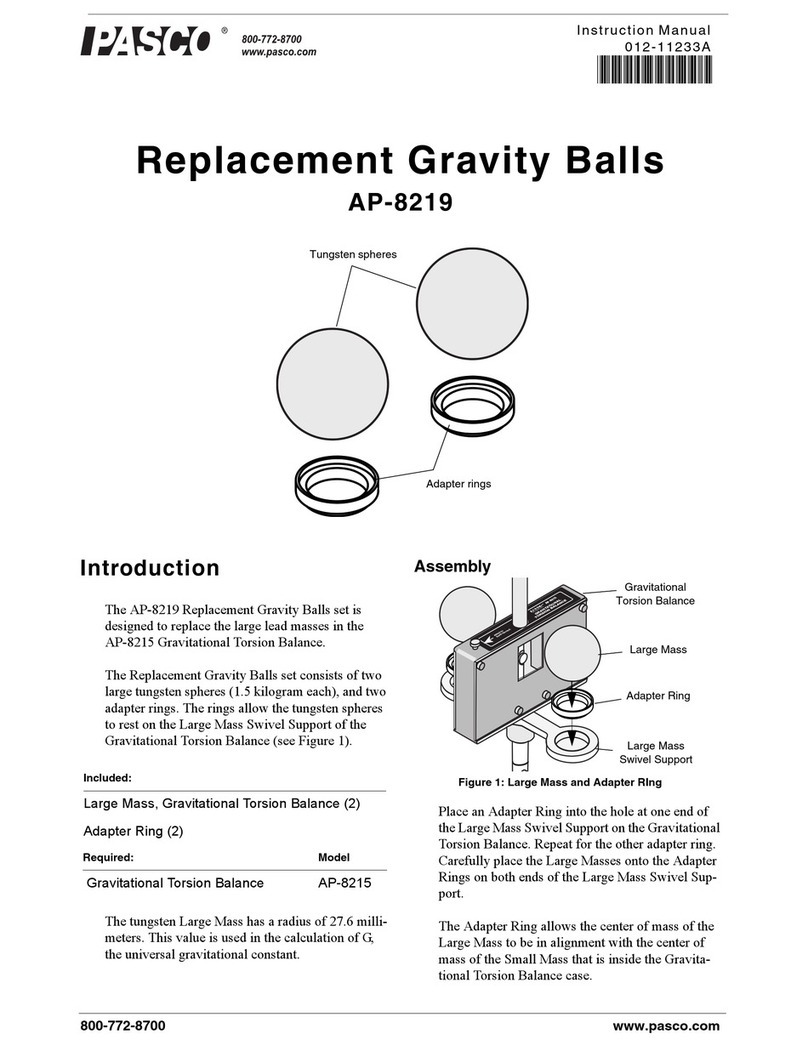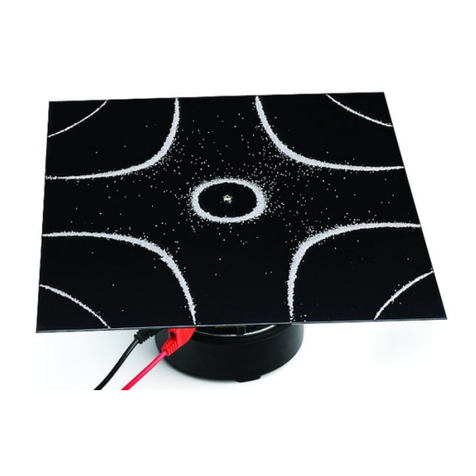
Photoelectric Effect Apparatus SE-6609
4
Introduction
The photoelectric effect is the emission of electrons from the surface of a metal when electromagnetic radiation (such as visible
or ultraviolet light) of the right frequency shines on the metal. At the time of its discovery, the classical wave model for light
predicted that the energy of the emitted electrons would increase as the intensity (brightness) of the light increased.
Instead it was discovered that the energy of the emitted electrons was directly proportional to the frequency of the incident
light, and that no electrons would be emitted if the light source was not above a certain threshold frequency. Lower energy
electrons were emitted when light with relatively low frequency was incident on the metal, and higher energy electrons were
emitted when light with relatively high frequency was incident on the metal.
About the Apparatus
The SE-6609 Photoelectric Effect Apparatus consists of a mercury light source enclosure, a track, a tunable direct current (DC)
constant voltage power supply, a DC current amplifier, a power supply for the mercury light source, miscellaneous cords and
cables, a photodiode tube enclosure that has optical filters with five different frequencies and an aperture disk with three
different diameters, and protective caps for the photodiode enclosure and the mercury light source enclosure. The photodiode
enclosure and the mercury light source enclosure mount on the included track.
The apparatus has several important features:
• The current amplifier has high sensitivity and is very stable in order to improve the accuracy of the measurement.
• The photodiode tube has low levels of dark current and anode reverse current.
• The optical filters are of high quality in order to avoid an error due to interference between different spectral lines.
When connected to a PASCO Interface using PASCO Data Acquisition Software (such as PASCO Capstone), the current and
voltage can be measured, recorded, displayed and analyzed.
Background Information
Many people contributed to the discovery and explanation of the photoelectric effect. In 1865 James Clerk Maxwell predicted
the existence of electromagnetic waves and concluded that light itself was just such a wave. Experimentalists attempted to
generate and detect electromagnetic radiation and the first clearly successful attempt was made in 1886 by Heinrich Hertz. In
the midst of his experimentation, he discovered that the spark produced by an electromagnetic receiver was more vigorous if it
was exposed to ultraviolet light. In 1888 Wilhelm Hallwachs demonstrated that a negatively charged gold leaf electroscope
would discharge more rapidly than normal if a clean zinc disk connected to the electroscope was exposed to ultraviolet light. In
1899, J.J. Thomson determined that the ultraviolet light caused electrons to be emitted from the metal.
In 1902, Phillip Lenard, an assistant to Heinrich Hertz, used a high intensity carbon arc light to illuminate an emitter plate.
Using a collector plate and a sensitive ammeter, he was able to measure the small current produced when the emitter plate was
exposed to light. In order to measure the energy of the emitted electrons, Lenard charged the collector plate negatively so that
the electrons from the emitter plate would be repelled. He found that there was a minimum “stopping” potential that kept all
electrons from reaching the collector. He was surprised to discover that the “stopping” potential, V, - and therefore the energy
of the emitted electrons - did not depend on the intensity of the light. He found that the maximum energy of the emitted
electrons did depend on the color, or frequency, of the light.
In 1901 Max Planck published his theory of radiation. In it he stated that an oscillator, or any similar physical system, has a
discrete set of possible energy values or levels; energies between these values never occur. Planck went on to state that the
emission and absorption of radiation is associated with transitions or jumps between two energy levels. The energy lost or
gained by the oscillator is emitted or absorbed as a quantum of radiant energy, the magnitude of which is expressed by the
equation: E = h
where Eequals the radiant energy,
is the frequency of the radiation, and his a fundamental constant of
nature. (The constant, h, became known as Planck's constant.)



















































